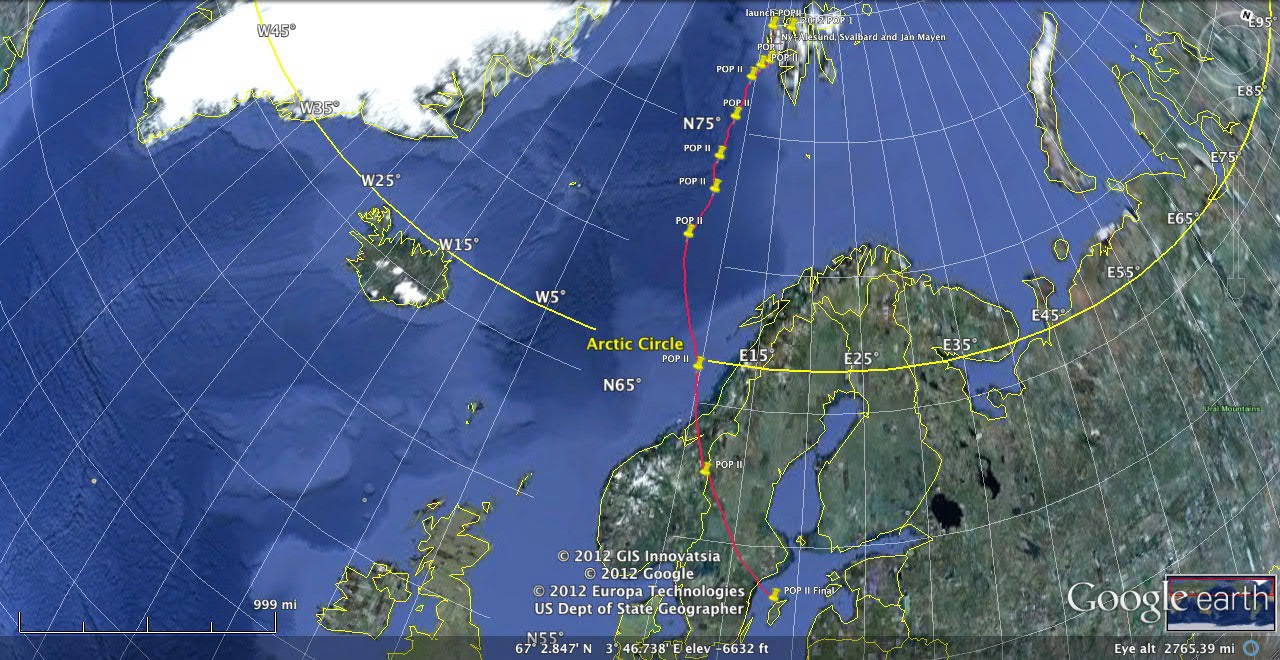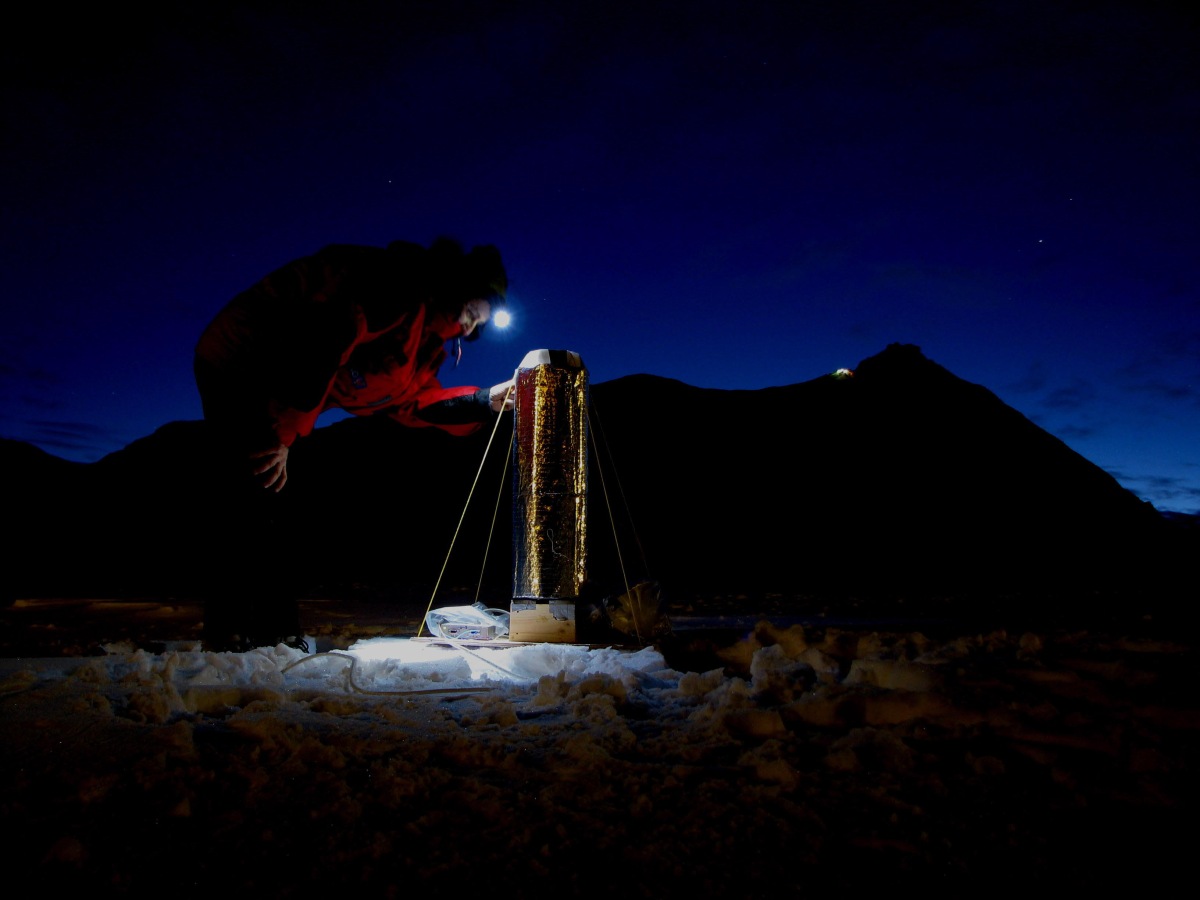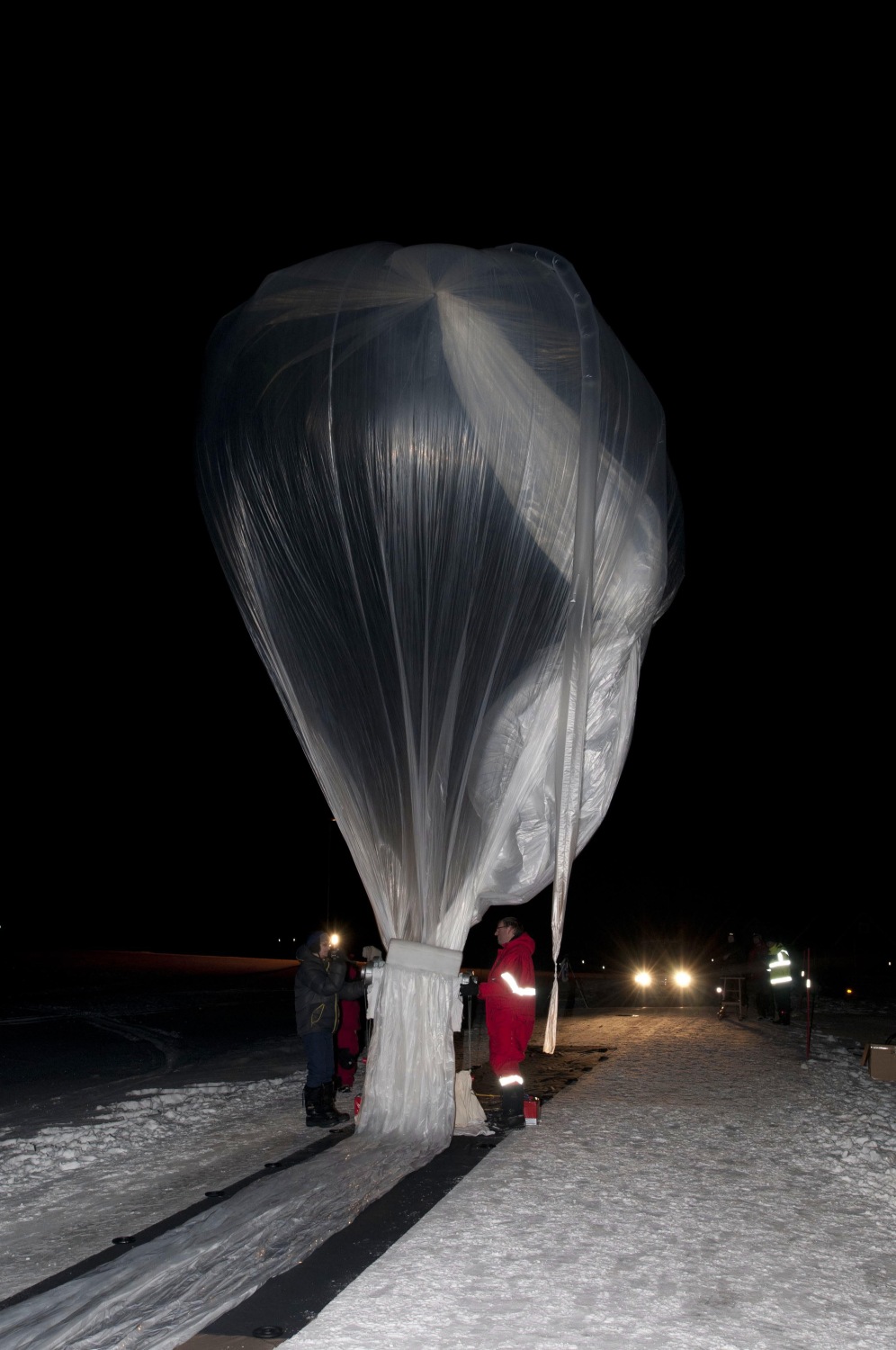Purpose of the flight and payload description
The aim of the POP (Polar Observation Platform) initiative was to demonstrate the feasibility of long-duration stratospheric-balloon flights during the polar night in the Arctic. The effort was carried out through a cooperation between the University ''la Sapienza" of Rome and the ISTAR-Group (International Science Technology and Research) from the United States. Balloons were launched with the support of the Consiglio Nazionale delle Ricerche that offered the facilities of the Dirigible Italia base in Ny Alesund, Spitzbergen Island in Svalbard.
Objectives of the 2012 campaign were to test a new electronic components and telemetry system designed and built by the Physics department at the University of Rome La Sapienza. A secundary goal was to observe, in real time, the polar winter night sky stratospheric wind trajectories for planning future campaigns with heavy lift Long Duration Balloons (LDB) during the polar night. Final objective was to test new flight hardware developed by ISTAR. The winter flight offers to the science teams observations without the solar radiation experienced during the summer months.
The payload carried out by the balloon was a simple battery powered GPS and transmitter that delivered time, temperature, speed, heading, and altitude through an IRIDIUM-based communication system.
Details of the balloon flight

Balloon launched on: 1/19/2012 at 19:26 utc
Launch site: Ny-Alesund, Svalbard, Norway
Balloon launched by: ISTAR (International Science Technology And Research)
Balloon manufacturer/size/composition: Zero Pressure Balloon Near Space Corporation - 3791 m3
End of flight (L for landing time, W for last contact, otherwise termination time): 1/20/2012
Balloon flight duration (F: time at float only, otherwise total flight time in d:days / h:hours or m:minutes - ): 28 h
Landing site: Gotland Island, Baltic Sea
Payload weight: 38 kg
The balloon was launched from Ny Alesund, Spitzbergen Island on January 19, 2012 at 19:26 utc in perfect conditions. Ascent rate was 4.2 meters per second. The trajectory of the balloon was a surprise as once float altitude was reached, the balloon turned from a westwardly climb-out to a southern track and continued in a SSE trajectory as can be seen in the map above. The trajectory continued southerly through the next 28 hours crossing Norway and over Sweden. The winds were in excess of 80 kilometers per hour. Upon reaching Gotland Island, in Sweden, it was determined best to terminate the flight over an area of open fields.
The terminate commands were sent and the balloon separated from the flight train and the payload descended and impacted in a lightly forested area of Gotland near the property of the launch director, Steven Peterzén's cousin Kaj Wiren, who, along with a friend, simply went and recovered the payload. Kaj then took it home to ship back to the University of Rome La Sapienza, Rome, Italy. The payload and flight system were in perfect condition. The trajectoy was unlike any flight profile experienced in the past 8 years of launching stratospheric balloons by the same team from Svalbard.
External references
- Dalla notte artica alla prima luce del Big Bang Media INAF, 1/31/2012
- Dalla notte artica le origini dell'Universo MeteoWeb, 1/27/2012
- I palloni stratosferici italiani dalla base dove parti Nobile Corriere de la Sera, Scienze, 2/10/2012
- ISTAR group launched balloons from Svalbard Stratocat website
11304If you consider this website interesting or useful, you can help me to keep it up and running with a small donation to cover the operational costs. Just the equivalent of the price of a cup of coffee helps a lot.



